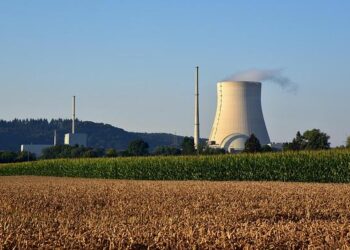Nigeria’s N120 billion fish industry is hard hit by soaring feed prices, threatening especially the small and medium players in the sector.
The National Bureau of Statistics (NBS) estimates the size of the local fish industry at N120.043 billion.
The once thriving sub-sector is now hit by skyrocketing feed prices which have soared by 100 percent or more in one year.
Fish prices have risen from N18,000 in 2023 to N36,000 in 2024 for a 15kg bag in Lagos, representing a 100 percent increase across the country. It is slightly higher in the Niger Delta region known majorly for fish farming, farmers say.
A 50kg of fish feed cost as high as N74,000 on online shops as of Thursday, July 4, as against below N35,000 in the same period of 2023.
Read also: Lessons from Dickem Fish Farms Success Story
Samson Feyisetan, chief executive officer of SAFSON Farm, said he was forced to shut down over 10 of his fish ponds in a space of two years because of his inability to feed his fish.
“I have had to cut down on the number of fish I buy,” he said. “Instead of getting 10,000 pieces, I now get 2,000. Yet, I still only manage to feed them because feed is so costly.”
Feyisetan further said that with the soaring prices, more fish farmers may be forced to close their ponds. He noted that many farmers have moved into other businesses because they cannot afford to buy feed and other inputs.
The World Bank data says that Nigeria is Africa’s third largest producer of fish, producing 1,169,478 metric tons. Egypt is first while Morocco is second on the continent at 1,934,743 and 1,387,815 metric tons respectively.
Over 80 percent of Nigeria’s domestic production is done by artisanal small-scale fishers from coastal, inshore, creeks of the Niger Delta, lagoons, inland rivers and lakes, the Food and Agricultural Organization says.
But the fish farms and ponds are now in peril as the rising cost of feed has forced many farmers to abandon the business as it becomes increasingly unattractive, Feyisetan said.
The rising prices of raw materials for processing fish feed such as maize, soybeans and minerals are driving the rise of feed costs, he said.
According to him, prices of maize and soybeans, which are key protein ingredients in the production of the feed, have risen by more than 100 percent in one year.
BusinessDay findings show that a metric tonne of maize currently sells for an average of N600,000 to 1million, depending on location. It was half the price in late 2022.
“Maize and soybean are expensive. Even if you get the money to buy them, they are not easy to find in the market. We no longer have many farmers in their farms again. This has reduced local sourcing of raw feed materials,” Feyisetan added.
Food inflation, which is a major driver of headline inflation, was 40.66 percent in May 2024.
Opeyemi Adeniyi, farm manager of Courage Farms and Agro, said she has had to look for alternatives to feed her fish such as boiled chicken due to the high feed prices.
“It is becoming very tough to buy feed at the market due to high prices,” she noted.
The recently released National Agricultural Sample Census Report prepared by the National Bureau of Statistics (NBS) revealed that only five percent of agricultural households in Nigeria are engaged in fish farming.
The report revealed that among the total communities interviewed, about 68 percent reported that low financial capability, poor access to credit and insufficient infrastructure were major constraints limiting the sector.
Read also: How we fished out fraudsters in N4bn SME loan fund RIMA
Francisca George, a professor of Aquaculture and Fisheries Management at the Federal University of Agriculture, Abeokuta, said that fish farming is a lucrative business but farmers need proper understanding to avoid running at a loss.
“Aquaculture is relatively new, but it’s very well developed and is still developing in Nigeria. It’s the fastest-growing agricultural venture worldwide,” she said in response to BusinessDay questions.
According to her, while the enterprise is capital-intensive, its returns are worthwhile, urging that farmers should see beyond the cost to the rewards that follow.
“Fish diets contain large quantities of protein and we know protein in Nigeria is not cheap. The feed carries over 60 percent of the running cost of aquaculture, so it is expensive. However, the conversion rate is very good,” George said.
For Esther Feyisetan, chief executive of Feyi Smoked Catfish, who is into the processed side of aquaculture, insecurity has forced many farmers to other businesses and this is affecting local sourcing of feed.
“A lot of farmers have left their farms due to insecurity and it is affecting the supply of some major ingredients needed in the production of fish feed,” she told BusinessDay.
>>> Read full article>>>
Copyright for syndicated content belongs to the linked Source : Businessday.ng – https://businessday.ng/news/article/high-feed-costs-hurt-nigerias-n120bn-fish-industry/































